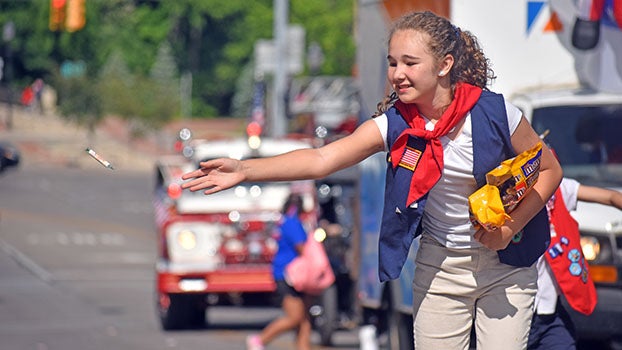Sylvia Suggs turns 100
Published 11:09 am Thursday, March 1, 2012
South Bend Mayor Pete Buttigieg issued a proclamation for Sylvia Rogers Suggs’ 100th birthday Feb. 14.
Born in Marked Tree, Ark., to Lonnie and Mary Rogers, the birth of her sister in December 1926 took the life of the teen’s mother.
The widow of a black folklorist “rose above tragedy and took upon herself the responsibility of caring for her family,” raising her sister and two brothers.
At 16, Suggs fell in love with her soulmate, an Army veteran of World War I in France named James Douglas Suggs.
The storyteller lives on through an Underground Railroad museum at the family home on Main Street in Vandalia and a “Black and White Coming Together” freedom festival established in 1994 that takes place Aug. 4-5 this year.
Richard Dorson, an Indiana University professor, in the 1950s collected folk tales James liked to tell. The two men met in Calvin Township in 1952 and were inseparable until cancer claimed James; life on June 19, 1955. Dorson died in 1981.
Dorson taped James, “the best storyteller I ever met,” including playing his guitar and singing. His voice is also preserved in “American Folktales,” a two-volume Library of Congress collection Carl Lindahl edited.
James performed in the Rabbit’s Foot Minstrel Show, played exhibition baseball and worked as a brakeman for the Illinois Central Railroad, where he knew Casey Jones, the famed-in-song engineer killed in a head-on train collision.
It was said James held jobs in 39 states, from work as a prison guard and bridge-building to touring with a jazz troupe whose 28 members included Bessie Smith.
Comedian, actor, dancer, cook and guitarist, it’s no wonder Dorson found him compelling.
Two Suggs daughters, Martha Ann and Toka, turned the family home into the museum to promote interracial harmony. Christ Ann Creek, where they caught “horny-head fish and suckers,” runs behind the house.
Sylvia and James, born March 10, 1887, in Durant in the Mississippi Delta, produced 12 children.
“Sylvia Rogers Suggs witnessed history through her eyes,” the mayoral proclamation said. “She observed soldiers living through two world wars, women fighting for their right to vote. She endured the afflictions of the Great Depression and, through courage and hard work, helped her family overcome great difficulties.”
In May 1945, when Martha was 5, the family moved to the Midwest.
Sylvia’s husband worked on the first Housing Authority, Memorial Hospital and the University of Notre Dame.
Arkansas cotton fields
Sylvia’s daughter, Martha Suggs Spencer, said her mother’s family moved to tiny Bono, Ark., 10 miles south of Jonesboro, when she was still very young.
Sylvia’s parents were Cherokee Indians. There was no school for them, just hard work, sun-up to sundown in cotton fields.
Sylvia rose at dawn, cooking and getting her siblings ready. When her mother died in her 30s, Mary was consigned to an unmarked grave in the woods.
Only white people were buried in the cemetery near the Rogers home.
At 42, James visited his brother in Jonesboro who urged the bachelor to settle down. In fact, his brother recommended a “pretty Indian girl in Bono” whose mother died and father worked all the time, leaving her to run the household wearing the one black dress she owned.
James went to check her out and found Sylvia more beautiful than his brother promised, even while plucking feathers from a chicken.
He proposed and received her father’s blessing amid laughter: “Hell, yes, take her!” The date May 28, 1928, was set.
James moved in and Lonnie left the home, not to return for a long time.
Their first child came along on March 16, 1935.
James was well-liked in Bono. The Suggs were the only black family working on the plantation at that time. James was overseer of other black people who came out in trucks from Jonesboro to pick or chop cotton.







